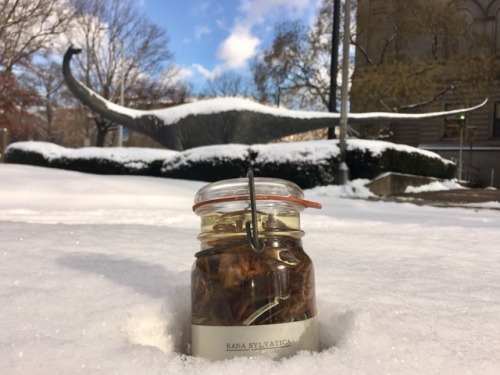
Rana sylvatica (also formally known as Lithobates sylvaticus) freeze 2/3 of their bodies in the winter during hibernation! They stop breathing and their hearts stop beating.
How do they do this? Cryoprotectants. Their body produces an excess of urea and glucose in order to avoid cell shrinkage and ice formation. When spring arrives, the frog simply thaws and returns to a normal life.
Kaylin Martin is a Curatorial Assistant in the Section of Herpetology. She blogs about the collection in Carnegie Museum of Natural History’s historic Alcohol House, which is home to thousands of fluid-preserved specimens.
